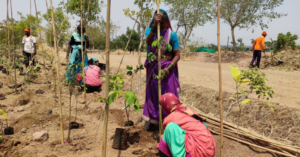The Renaissance of Landscape Rehabilitation

-Shivaan Darda

Every 60 seconds, forest area equaling around 20 football fields is degraded globally due to unhealthy human interaction with the ecosystem. Amid these startling figures, landscape regeneration is a ray of hope for environmental conservation. In this article, we can better understand how restoration projects provide a revolutionary way to revitalize our planet’s sensitive ecosystems.
Strategies for Restoration:
Reforestation: Studies have shown that although forests make up over 31% of the planet’s landscape, they are disappearing at a startling rate of 10 million hectares each year. This loss causes degraded water cycles, biodiversity loss, soil erosion, and challenges related to climate change. We can lessen these effects by planting trees in deforested regions as part of deliberate reforestation initiatives. Reforestation helps restore essential ecosystems but also sequesters carbon dioxide, with an estimated 1.7 billion metric tons of carbon absorbed annually.

Wetland Restoration: Despite making up only 6% of the planet’s surface, wetlands are disappearing three times faster than forests. Enhancing water flow and eliminating undesirable vegetation can help restore these regions and restore lost biodiversity and important functions like flood control. Wetland restoration is a financially advantageous endeavour, with every dollar invested returning up to seven dollars in benefits. Restored wetlands also absorb carbon more quickly than trees, making them strong allies in the fight against climate change.

CommunityEngagement: Includig the native population in restoration initiatives ensures the sustainability of restoration operations by fostering a sense of responsibility and supporting sustainable land management techniques. Additionally, by giving communities the tools they need to actively engage in restoration efforts, we can ensure long-term success.